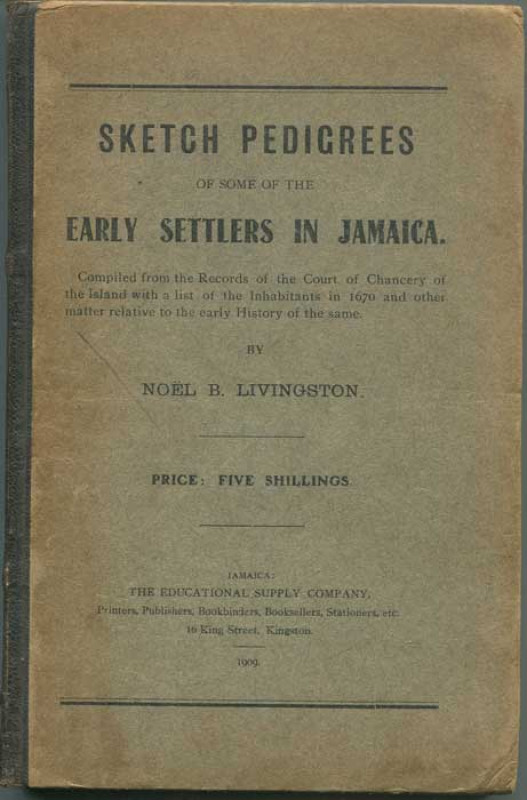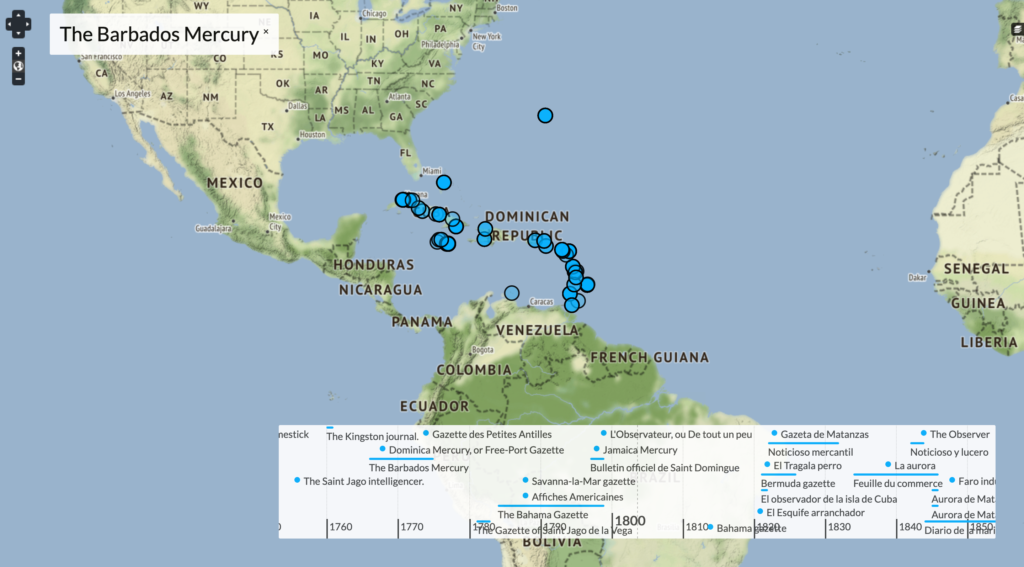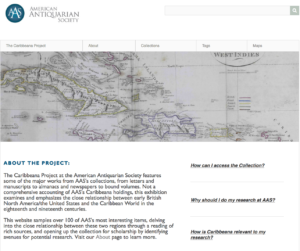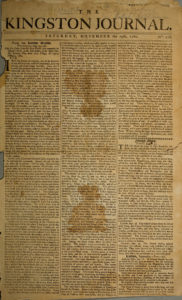Luke Henter is a senior in the History Department at Princeton University. He studies 19th and 20th century international history, with certificates in the History and Practice of Diplomacy and Creative Writing. He has also worked at the Princeton Historical Review and is a member of the Community Service Interclub Council at Princeton.
As a newcomer to the American Antiquarian Society (AAS), one thing becomes immediately clear after spending time in the archive stacks: I had a much higher chance of getting lost in there than I did actually finding what I was looking for. This is the inevitable result of building such a substantial archive over such a sustained period of time. Another inevitable outcome of having such a sizable collection is that it always contains something new and surprising, something I wasn’t expecting to find.
AAS is known for its “collection of books, pamphlets, broadsides, newspapers, periodicals, music, and graphic arts material printed through 1876 in what is now the United States,” but AAS’ collections are not limited – either by content or geography – to the United States or even to North America, and there is a rich collection of Caribbeana housed in the archive that deserves more attention. This dynamic collection forms the basis of The Caribbeana Project, a new AAS digital exhibition.
For an institution with a national mandate, it might seem incongruous for the American Antiquarian Society to hold such a wide-ranging collection, but the stories of North America and the Caribbean are intertwined. The AAS collections reveal that the study of each region is, in fact, complementary to, not separate from, the other. The items compiled for this project reveal the interconnectedness between the Caribbean and its people and the larger Atlantic World, visible in histories, trade, science and literature, religion, politics and law. The collection here includes travelogues from the eighteenth and nineteenth centuries, essays that describe the natural histories of the islands, and items that document the horrors of the Slave Trade and movement towards revolution and abolition.
The Caribbeana Project is not meant to be a complete account of every Caribbean-related item in the AAS Catalog. Such an account would be a monumental task. Instead, the exhibition advances two distinct claims. First, the Caribbean is an important and often overlooked aspect of North American history. Second, AAS’ collection of Caribbeana is rich and wide-ranging, and it is important to recognize these aspects of the AAS catalog.
The initial list for exhibition in this website was compiled from several bibliographies (Cundall, Cave, and others), as well as the AAS catalog. Then, I perused each one of the items, noting its characteristics and content. The Caribbeana Project makes it possible to sort these items by several characteristics, from date printed to place of publication. The highlight of the website is, however, a list of collections that groups the items by thematic focus, placing each item next to others that address similar questions. Reviewing these collections allows readers to see how different authors in different regions and different times considered the same general questions related to the Caribbean.

The process of creating this exhibition was neither simple nor straightforward. I am grateful to the PICS Internship Program for supporting this internship and making this great experience from last summer possible. I also owe a great deal to Elizabeth Pope, Curator of Books at the American Antiquarian Society, whose support and assistance have been invaluable and constantly appreciated as an internship supervisor.
The Caribbeana Project is meant to be both an inspiration and a resource. It has been the basis of an incredibly rewarding summer project, full of exciting breakthroughs and inspiring discoveries. I am grateful to both PICS and AAS for giving me the support and time to realize this project and make it a reality. I look forward to hearing, and seeing, how Caribbeana at AAS continues to grow and flourish. It is my hope that these resources prove as inspiring to future researchers at AAS as they have to me this summer.

Project Link: https://www.americanantiquarian.org/caribbeana/
For Further Reading:
Cave, Roderick. Printing and the Book Trade in the West Indies. Pindar Press, 1987.
Cundall, Frank. Political and Social Disturbances in the West Indies: A Brief Account and Bibliography. Institute of Jamaica, 1906.
Goslinga, Marian. A Bibliography of the Caribbean. Scarecrow Press, 1996.
Jordan, Alma and Barbara Comissiong, ed. The English-speaking Caribbean: A Bibliography of Bibliographies. G.K. Hall, 1984.




